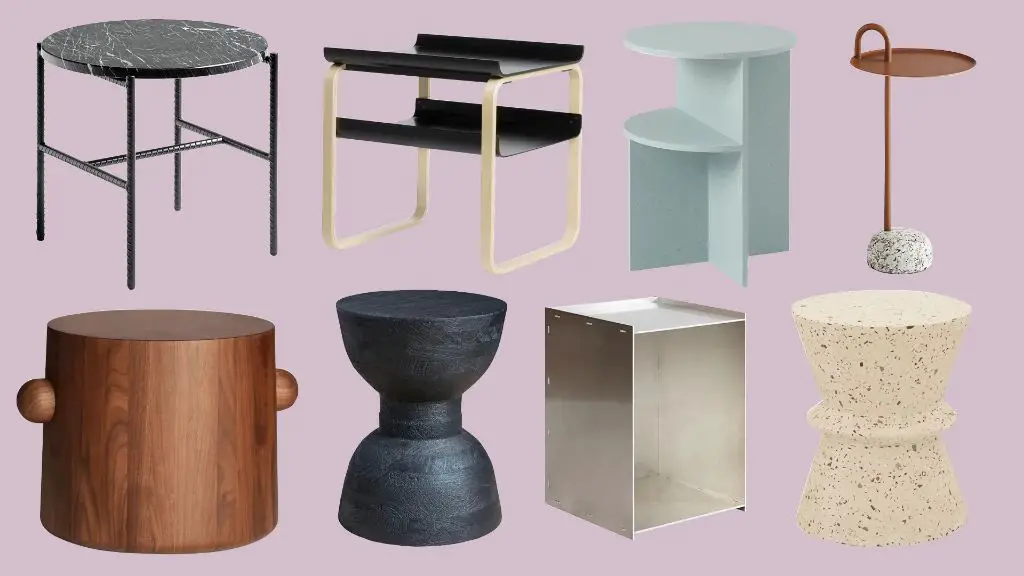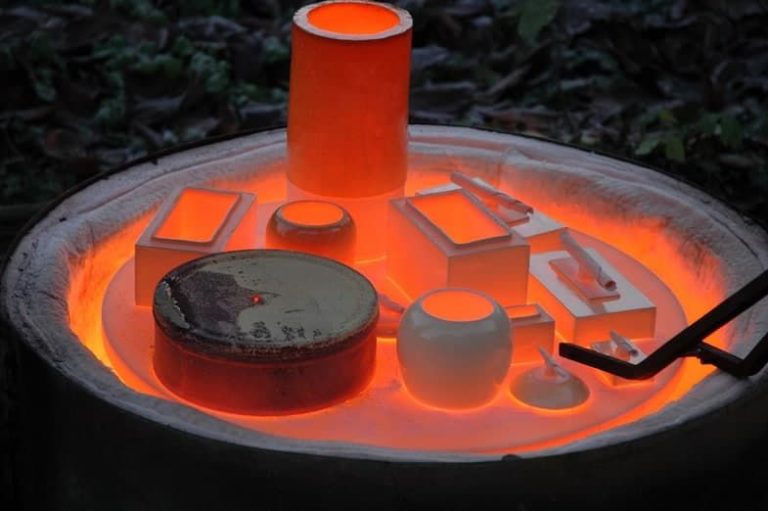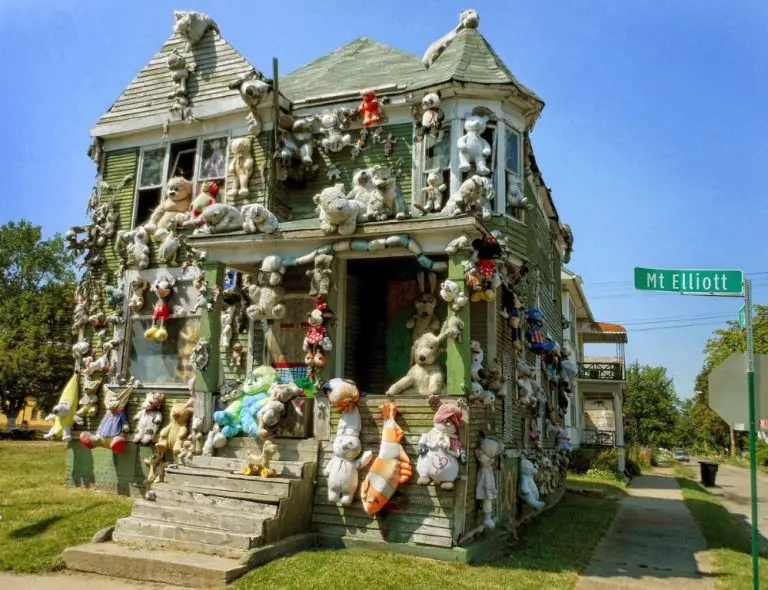What Is A Side Table Called?
A side table, also known as an accent table, end table, or occasional table, is a small table designed to be placed against a wall or near a chair or sofa.
The main purpose of a side table is as a convenient surface to place items that you may need within arm’s reach while sitting, such as a lamp, books, remotes, drinks, or decor. They provide a space to set down items temporarily when your main surfaces like coffee tables or nightstands are occupied or too far away. Side tables are versatile and useful additions to many rooms including living rooms, bedrooms, home offices, and entryways.
Unlike coffee tables which are meant for serving drinks or sharing items with others, side tables are more personal surfaces for individual use while seated. Their smaller size makes them easy to move around and position within reach.
History
The side table has evolved over time alongside beds and other bedroom furniture. According to Fine Woodworking, tables originated as simple boards propped up on trestles that could be set up as needed. By the 18th century, smaller tables like nightstands became popular for placing next to beds. The first recorded use of the word “nightstand” was in 1852, though “night table” was used as early as 1772 according to Laurel Crown.
In the Renaissance era, side tables and nightstands became more ornate with intricate wood carvings and inlays, as noted by Adsy. Different styles like Queen Anne, Chippendale, and Hepplewhite emerged during the 18th century. Modern minimalist nightstands trace back to the Bauhaus and mid-century modern movements. Though materials and forms have evolved, the basic function of the bedside table to hold a lamp, book, glass of water or other bedside necessities has remained consistent.
Types
There are several common types of side tables:
Accent Tables
Accent tables are small tables used to add visual interest to a room. They come in a variety of shapes, sizes, and styles. Accent tables are decorative and not usually used for practical purposes. They are placed next to chairs, sofas, and other furniture. Accent tables can liven up an empty corner or space 1.
End Tables
End tables, also called side tables, are small tables placed at the end of sofas or armchairs. They provide a convenient surface for placing lamps, books, remote controls, drinks, and other items. End tables are taller than coffee tables and usually have storage space like shelves or drawers 1.
Nightstands
Nightstands, often called bedside tables, are small tables that sit next to the bed. They hold items needed before going to sleep or upon waking such as books, glasses, medications, and alarm clocks. Nightstands with drawers provide extra storage space for personal items 1.
Sofa Tables
Sofa tables, also known as console tables, are long narrow tables designed to sit behind sofas. They are frequently placed against the back wall of a living room or entryway. Sofa tables provide a surface for displaying decorative objects while not taking up much space 1.
Materials
There are several common materials used to make side tables, each with their own aesthetic qualities and practical benefits.
Wood is a very popular choice for side tables. It has a natural, warm look and can be carved into many styles. Wood is also relatively lightweight but durable. Some common woods used are oak, maple, walnut, cherry, and mahogany 1.
Metal such as steel, iron, and aluminum are also frequently used. Metal side tables have a sleek, modern look and metal is very strong and long-lasting. However, metal tables can show scratches more and be prone to chipping 2.
Glass is a popular material that creates a lightweight, transparent aesthetic. Glass tops allow one to see through the table. Tempered glass is very durable, but unevempered glass can chip or shatter. Glass shows fingerprints and streaks easily.
Natural stone like marble, slate, and granite can be used as well, though this is less common. Stone tables have an elegant, substantial look but are very heavy.
Styles
Side tables come in a wide variety of styles to suit any decor. Some popular styles include:

Modern
Modern side tables feature clean lines, geometric shapes, and sleek materials like glass, metal, and high-gloss lacquer. They have an elegant, contemporary look. See examples at https://shopdesignstyles.com/collections/end-tables.
Rustic
Rustic side tables are characterized by natural, unfinished woods, visible wood grains, and materials like stone or wicker. They have an earthy, handcrafted vibe perfect for farmhouse decor. Distressed paints and stains are also common.
Industrial
Industrial side tables incorporate metal finishes like black iron, galvanized steel, or copper. They often have an open, scaffolding-like design. Industrial tables pair well with vintage furnishings and exposed brick or pipes.
Traditional
Traditional side tables feature elegant carved details, turned legs, and luxe materials like marble or mahogany. Ornate inlays, glossy lacquers, and glass tabletops are hallmarks of the traditional style. Curvy cabriole legs are also common.
Size
Side tables, also known as end tables or accent tables, come in a variety of standard and oversized dimensions. The most common side table heights range from 18-24 inches (Rapport Furniture). This puts them around 1.5-2 feet tall. Standard widths for side tables are 14-24 inches wide, providing enough surface space for lamps, books, remotes, drinks and more next to sofas and chairs (Wayfair).
Oversized side tables may be up to 36 inches tall and wide to provide more substantial surface area and visual presence. The depth or length of side tables ranges from 12-24 inches for standard sizes and up to 36 inches for larger oversized versions.
Placement
Side tables are versatile pieces of furniture that can be used in various rooms throughout a home. Here are some of the most common placements for side tables and how they are utilized in each space:
Living Room Uses
In living rooms, side tables are most often placed next to sofas or chairs. They provide a convenient surface for setting down drinks, remotes, books, and other items you want to keep within arm’s reach. Side tables also allow you to style the space with lamps, framed photos, or decorative objects. It’s common to see them flanking both ends of a sofa. According to Design Thusiasm, side tables should be 2-3 feet from the sofa or chair they accompany.
Bedroom Uses
In bedrooms, side tables are frequently used as nightstands on either side of the bed. They hold lamps, alarm clocks, phones, water, books, and anything else you need to access during the night or first thing in the morning. Some may also place a small side table near a comfortable chair in the bedroom to create a cozy reading nook.
Foyer Uses
In an entryway or foyer, a slim side table is often placed near the front door to hold keys, mail, and other items coming in and out of the home. Some foyers may also have a decorative console table against the wall to display art, a mirror, or greenery. This creates an attractive vignette when you first enter the home.
Decorating
Accent tables provide great opportunities to add visual interest and personality to a room’s decor. When decorating an accent table, some key elements to focus on include:
Lamp pairing – Pairing a stylish lamp on an accent table is a great way to add function and aesthetic appeal. Opt for a lamp with a unique base or colorful shade to make the table a decorative focal point. According to Life Once Cedar Lane, lighting helps accent tables stand out.
Using trays – Decorative trays add a layer of interest and can corral smaller decorative objects. Trays come in a variety of shapes, sizes, colors and materials. According to Pinterest, trays work well for displaying candles, books, or other curios.
Fresh flowers – A vase with fresh flowers is a simple way to add life, color and fragrance to an accent table. Go for a seasonal bouquet or opt for faux flowers if you want something low maintenance. Pinterest recommends updating accent table flowers weekly.
Purchasing End Tables
End tables can be purchased from many retailers, both online and in physical stores. Some popular places to buy end tables include:
- Big box stores like Target and The Home Depot – These stores typically have a wide selection of end tables at various price points starting around $50. Focus on wood quality and stability when purchasing.
- Furniture stores like IKEA – Known for affordable prices, starting around $20. Look for sturdy materials like solid wood over particle board.
- Online retailers like Simpli Home – Specialize in end tables with prices from $100-$500. Provide high-quality materials like mango wood, acacia wood, and metal.
When evaluating end tables, look for stability, quality of materials, and overall aesthetic. Solid wood tables with durable joinery will last longer than cheaper particle board options. Well-made end tables can range in price from $50 for basic options to over $500 for solid wood statement pieces from specialty retailers.
Conclusion
In summary, side tables serve a variety of important functions in home decor. They provide convenient access to items you need within arm’s reach, like a drink, remote, book, or phone. Side tables also help fill empty spaces and can act as statement decor pieces. With the diverse range of styles, sizes, shapes and materials available, side tables offer lots of room for creativity. Use them to express your personal tastes, complement your existing decor, or just add visual interest to a room.
Side tables are essential decorative and functional elements in most living spaces. While often overlooked, they play a vital role in completing a room’s layout and look. With some thought as to your needs and style, side tables can be used cleverly to maximize form and function. Whether placed next to a sofa, bed or chair, side tables are invaluable for keeping items handy. They are also great for displaying cherished belongings or making a unique decorative statement. With endless options, a well-chosen side table can elevate the design of any space.
When selecting and using side tables, don’t be afraid to get creative. Mix and match shapes, sizes and styles for visual interest. Use an ornate table as a sculpture or unexpected plant stand. Stack tables of descending height for a tiered display. Float a pair of slim tables on either side of a sofa or bed. The possibilities are endless, so have fun finding unique ways to work side tables into your home’s decor.



